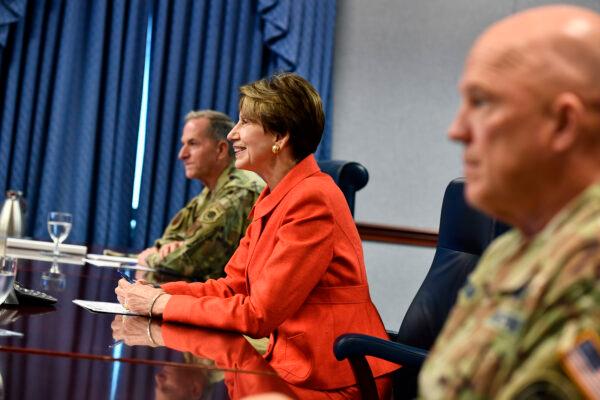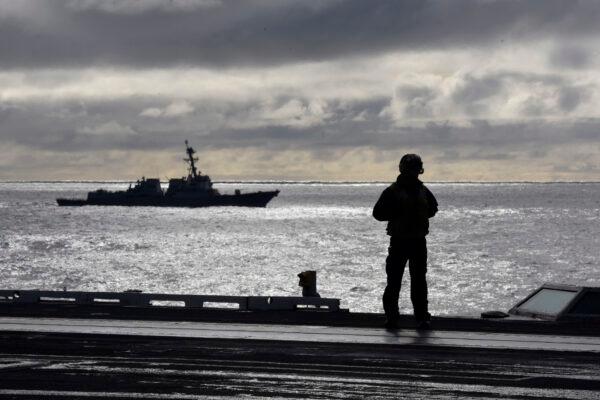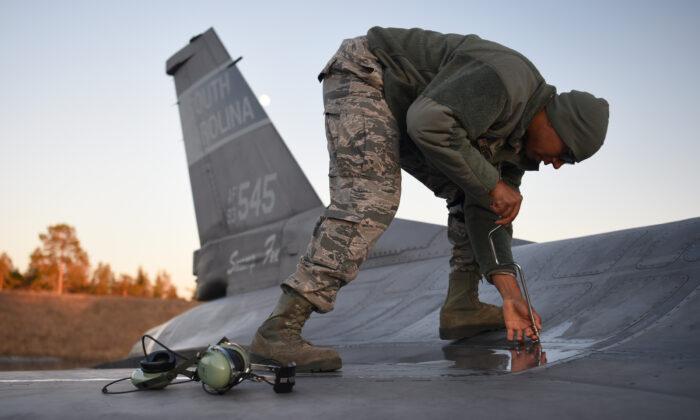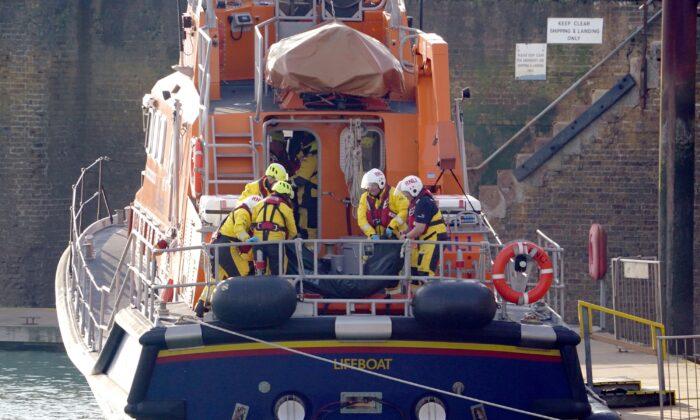For the first time, the Air Force has issued an official Arctic strategy, underscoring the region’s growing strategic significance.
Four key lines of effort are set out in the strategy document: increased vigilance for both deterrence and defense, projecting power through a combat-credible force, cooperation with allies and partners, and preparation for Arctic operations.
Russia has the largest permanent military presence in the Arctic, more than any other nation, according to Barrett.

But she also emphasized China’s push for a growing presence.
“China is trying to normalize its presence in the Arctic to gain access to regional resources, which are said to include over 90 billion barrels of oil and an estimated trillion dollars’ worth of rare-earth metals,” she said. “In 2018, China linked its Arctic activities to its ‘One Belt, One Road’ initiative. Many are concerned that China may repeat what some see as predatory economic behavior, to the detriment of the region.”
The new Arctic policy involves both land-based military airpower and space-based capabilities provided by the Space Force, Barrett said.
Gen. John Raymond, the chief of space operations, said that space operations have happened in the Arctic for a long time now—and that it offers ideal conditions.
“If you look at one of the most critical missions that we do, and that’s missile warning, the Arctic is our front edge of that mission,” Raymond said. “We do that mission both at Thule, Greenland, north of the Arctic Circle, with our space professionals that are assigned there at Thule Air Base. We also do it in Alaska at Clear Air Force Station.”

“If you look at the key terrain aspect of that environment, we also command and control satellites,” he said. “If you’re going to command and control satellites that are in polar orbits, where better to do it then on top of the world at the pole? It allows us to get great access to those satellites to be able to command and control and do that business. So that geography and the position on the globe ... makes it an extremely advantageous place to operate from.”
Since 2018, U.S. defense policy has officially marked countering a revanchist Russia as a top priority, second only to revamping to compete with China. Officials reject the notion that the shift marks a return to the Cold War, but some of the key naval dynamics with Russia remain the same as 40 years ago–including in the Arctic.
On June 9, President Donald Trump ordered a new fleet of at least three heavy icebreakers—potentially nuclear-powered—to be built in the next decade, to add to the current fleet of just two.
In May, the first U.S. Navy ships since the Cold War sailed into the Barents Sea in Russia’s maritime backyard.
Two years earlier, the USS Harry Truman became the first aircraft carrier to sail to the Arctic Circle since the Reagan administration.
That carrier visit also broke with the previous clockwork cycles of deployment—showcasing a new strategy known as “dynamic force employment,” which is aimed to keep adversaries on their toes.





